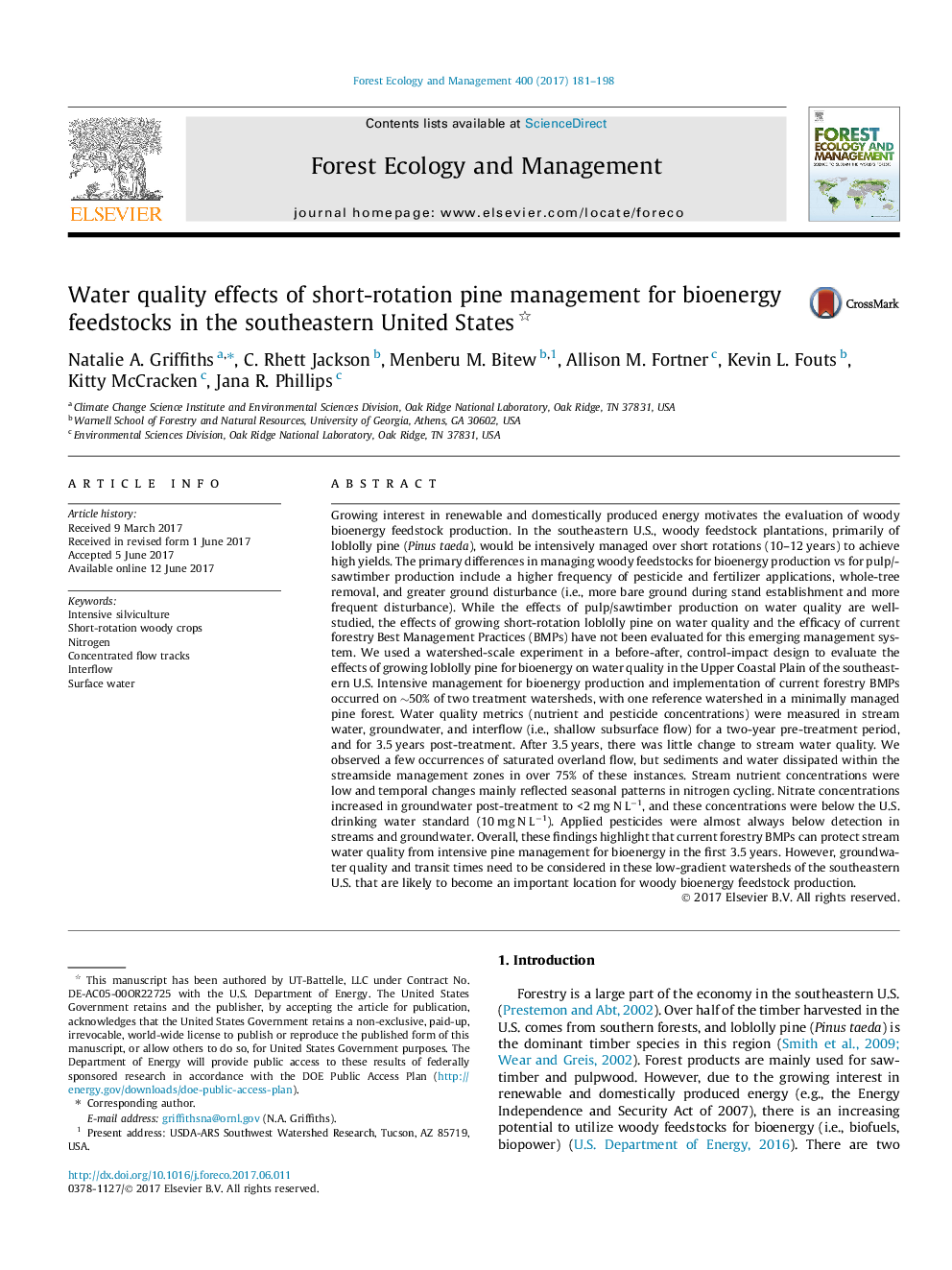| کد مقاله | کد نشریه | سال انتشار | مقاله انگلیسی | نسخه تمام متن |
|---|---|---|---|---|
| 6459224 | 1421358 | 2017 | 18 صفحه PDF | دانلود رایگان |
- Examined effects of short-rotation pine for bioenergy on water quality in the field.
- Few observations of saturated overland flow and little effect on stream water quality.
- Nitrate concentrations increased in groundwater post-treatment to <2 mg N Lâ1.
- Forest BMPs can protect stream water quality in low-gradient southeast US watersheds.
- Continued groundwater monitoring needed to examine long-term effects in these systems.
Growing interest in renewable and domestically produced energy motivates the evaluation of woody bioenergy feedstock production. In the southeastern U.S., woody feedstock plantations, primarily of loblolly pine (Pinus taeda), would be intensively managed over short rotations (10-12 years) to achieve high yields. The primary differences in managing woody feedstocks for bioenergy production vs for pulp/sawtimber production include a higher frequency of pesticide and fertilizer applications, whole-tree removal, and greater ground disturbance (i.e., more bare ground during stand establishment and more frequent disturbance). While the effects of pulp/sawtimber production on water quality are well-studied, the effects of growing short-rotation loblolly pine on water quality and the efficacy of current forestry Best Management Practices (BMPs) have not been evaluated for this emerging management system. We used a watershed-scale experiment in a before-after, control-impact design to evaluate the effects of growing loblolly pine for bioenergy on water quality in the Upper Coastal Plain of the southeastern U.S. Intensive management for bioenergy production and implementation of current forestry BMPs occurred on â¼50% of two treatment watersheds, with one reference watershed in a minimally managed pine forest. Water quality metrics (nutrient and pesticide concentrations) were measured in stream water, groundwater, and interflow (i.e., shallow subsurface flow) for a two-year pre-treatment period, and for 3.5 years post-treatment. After 3.5 years, there was little change to stream water quality. We observed a few occurrences of saturated overland flow, but sediments and water dissipated within the streamside management zones in over 75% of these instances. Stream nutrient concentrations were low and temporal changes mainly reflected seasonal patterns in nitrogen cycling. Nitrate concentrations increased in groundwater post-treatment to <2 mg N Lâ1, and these concentrations were below the U.S. drinking water standard (10 mg N Lâ1). Applied pesticides were almost always below detection in streams and groundwater. Overall, these findings highlight that current forestry BMPs can protect stream water quality from intensive pine management for bioenergy in the first 3.5 years. However, groundwater quality and transit times need to be considered in these low-gradient watersheds of the southeastern U.S. that are likely to become an important location for woody bioenergy feedstock production.
Journal: Forest Ecology and Management - Volume 400, 15 September 2017, Pages 181-198
